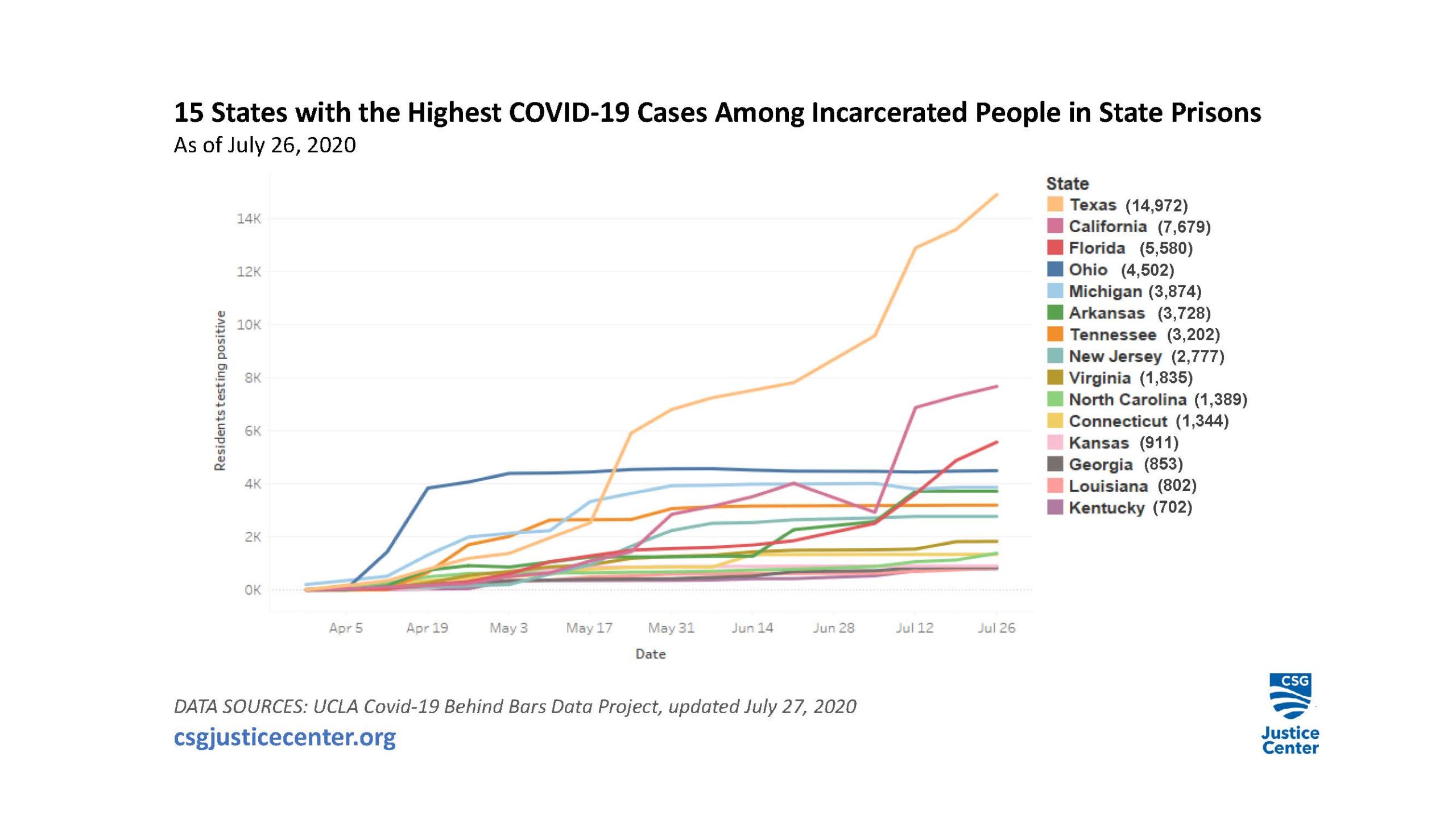
New data analyses from The Council of State Governments Justice Center show that COVID-19 in state prisons is continuing to spread. While states differ in their approaches to testing, containment, and data reporting, available state case numbers point to a continued increase in cases of the virus in state correctional facilities.
The following three graphs visualize the total number of reported cases in state prisons as of July 26; how infection rates differ among incarcerated people, corrections staff, and the general public; and data on 15 states with the highest cases in their prisons.
2. The proportion of incarcerated people infected with COVID-19 in state prisons continues to grow, indicating that many states are struggling to contain the virus in their correctional facilities.
Early on, the outbreak was more pronounced among corrections staff, but it quickly began spreading to a broader population. On April 15, corrections staff were infected at more than double the rate of both incarcerated people and the general public. But as of July 26, incarcerated people were infected at more than four times the rate of the general public, and nearly two times the rate of corrections staff. Corrections staff are now infected at a rate of two and a half times that of the general public.
3. The top four states leading the country in COVID-19 infections among incarcerated people in state facilities—Texas, California, Florida, and Ohio—account for 50 percent of all state prison cases.
The total incarcerated population in these four states alone amounts to 34 percent of the total incarcerated population in state prisons nationwide. Caseloads in several states, including Minnesota, Ohio, and Tennessee, began to flatten in the late spring, which could reflect state testing practices or successful containment strategies.
For more information about COVID-19 in the criminal justice system, please visit our COVID-19 Assistance page.
About the Author














